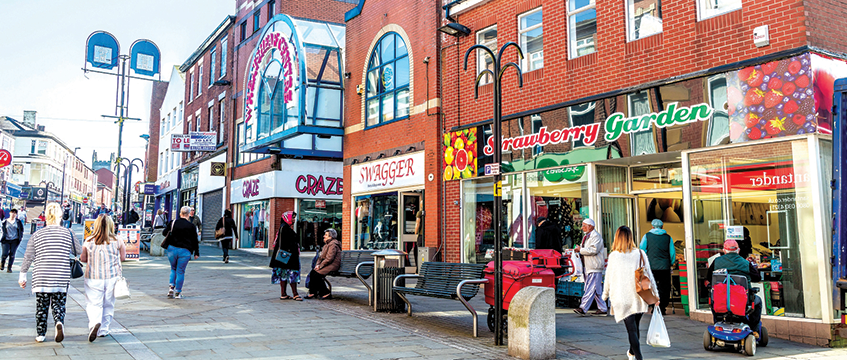As lockdown lifts and shops gradually reopen, you’d be forgiven for thinking the worst was over for retail property. During lockdown up to 83% of shops were closed, which is more than 380m sq ft of space. Most would hope for a return to normality now, with tills ringing again and socially distanced queues forming (very long ones in the case of Primark). The physical retail world is alive.
But as another quarter of rent and service charge collections comes in low, and with cash reserves from March largely used up, many lenders have been waiting until now to reassess their retail positions. “March is not the main event” as one lender told us.
The funny thing about the new normal is – it is the old normal, but faster. Normality has become a retail sector undergoing structural change, with unprecedented challenges. It leaves winners and losers. The “losers” before Covid-19 still have a fixed path downwards, which is now even steeper.
The role of e-commerce in this change is well publicised. During lockdown more than 75% of the UK population made a purchase online, causing a record surge to over 30% of total retail spending. However, the issues facing the sector are not so simplistic. The question of how to understand the change, and filter the winning from the losing assets, has remained largely unanswered. Meanwhile, liquidity has seized up and valuations have ticked down.
Short-term cashflow v long term value
So, where can lenders find answers? Early rent collection figures in Ellandi’s 27-asset portfolio tells their own story about the diversity of asset performance during the pandemic. The average of 35% for the June quarter to date masks a range from 5% to 70% of rents collected. The best by this metric are grocery anchored and community focused. However, short term cashflow begets a bigger question about realisation prospects.
We can expect another hatchet to be taken to listed property valuations this quarter. However, few believe that salami slicing “Zone A tones” and blowing out yields can tell the whole story about an asset’s performance and prospects.
Investors eyeing the sector for well-priced opportunities will look carefully for signs of resilience amid the carnage. But what are they looking for, when will they step up, and what till they pay?
Fresh thinking required
With gravity-defying valuations and surplus cashflow to service debt, the can has arguably been kicked down the road for some time. Whether from existing owners or newly appointed managers, a fresh perspective will be required to tackle the challenges the Covid-19 has brought forward. The decision of the lenders on the intu portfolio to take control of their assets suggests a willingness to get on the front foot, and no doubt others will soon follow.
Lenders will need to grapple with the challenges of owning retail assets and assess if they have inherited a “winner” or “loser”, to adapt strategy accordingly. But winners are not all shiny and fully let, and losers are not all broken and vacant. Early diagnosis is key to identify the root causes of falling rents and spiralling vacancy, as well as focus on exit routes and maximise the chances of recovery.
So, new tools are required to evaluate the retail places of today and implement a successful recovery plan for owners, lenders, assets and communities.
New tools
The solution must be innovative. We believe it combines data and technology with operational experience. It should diagnose the purpose and potential of a place, and then prescribe the change needed to fulfil it. This plan can form the basis of a route to recovery for both lenders and owners. As the market reprices and liquidity unlocks, a clear purchase rationale will be needed to tap into the requirements of buyers, whether they are proactive local authorities, developers, property companies or funds.
Just as not all shops will reopen, the pain will not be evenly spread. Each location will require its own bespoke assessment. This makes an adaptable diagnostic toolkit even more vital.
If the new normal forces retail to respond faster to the needs of visitors and occupiers, we had better get on and identify them. Perhaps the worst isn’t over for retail. But with the right plan, the best could be still to come.
David Cohen is investment manager at Ellandi











